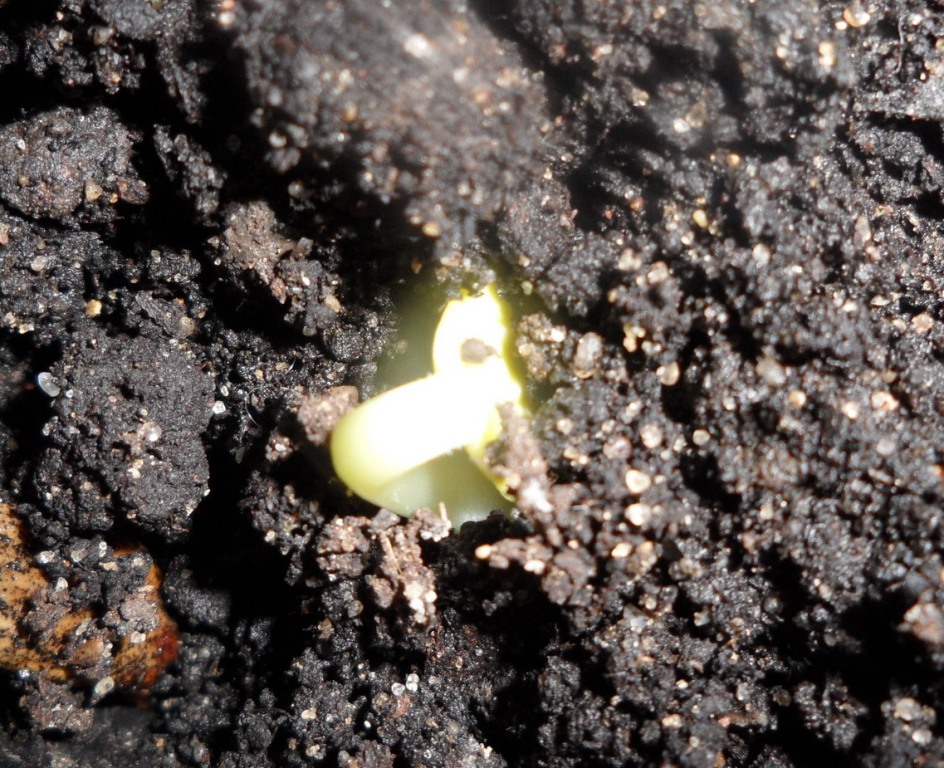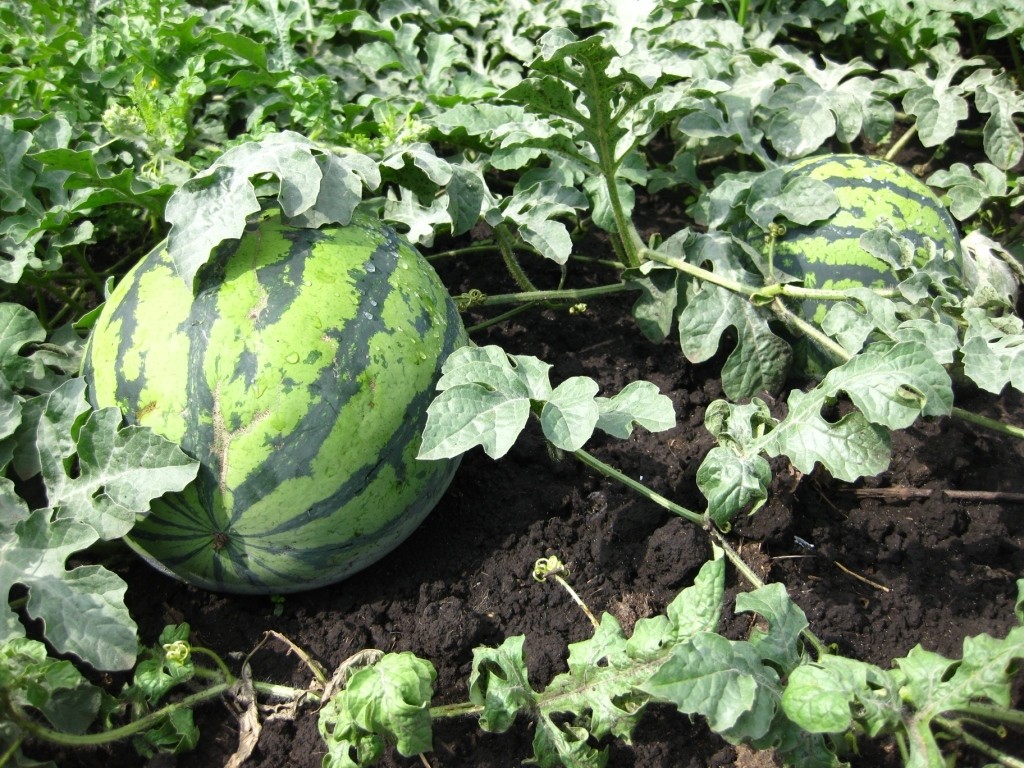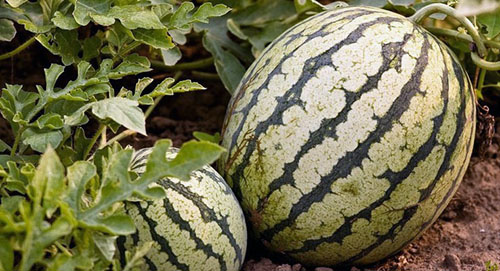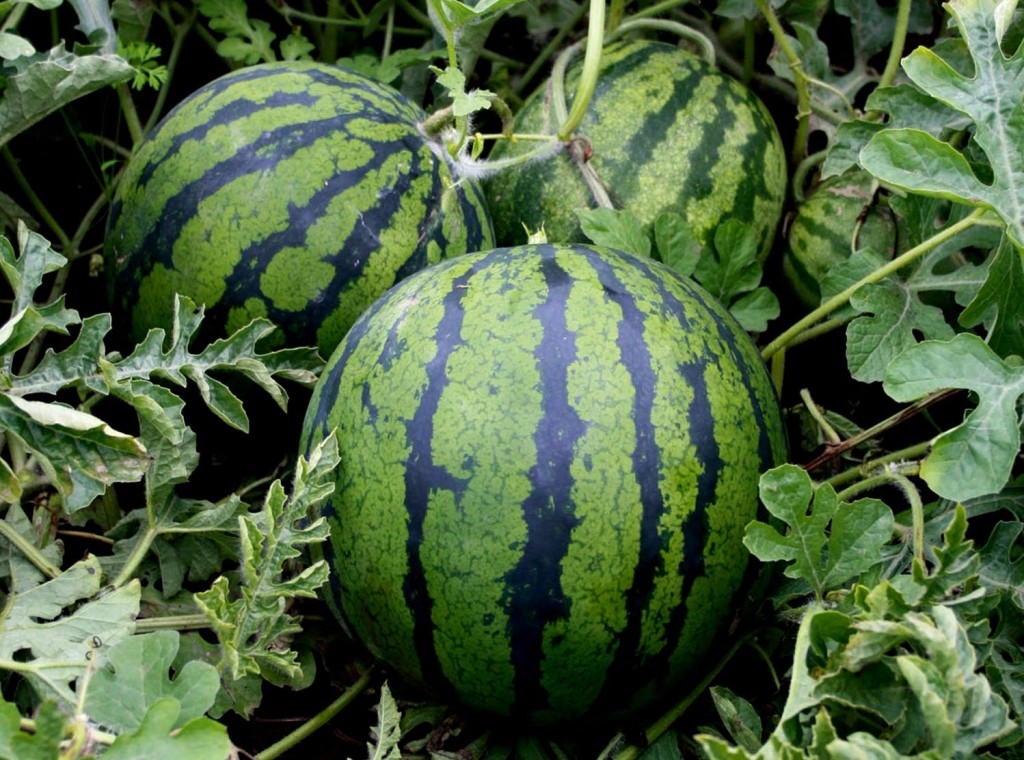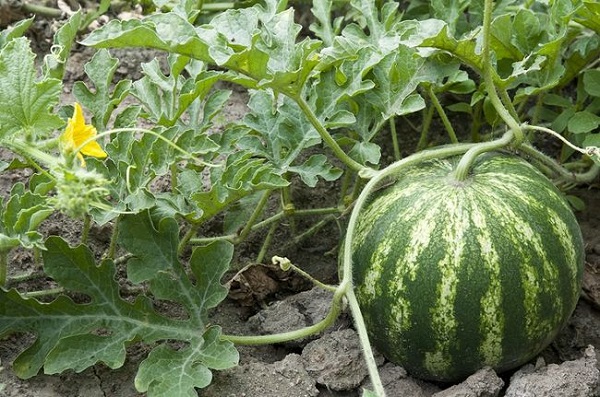Planting and caring for watermelons outdoors
Content
Soil preparation
Do you plan to plant watermelons in the suburbs, in the Urals, in Siberia, you should prepare the land. Watermelon is a thermophilic crop. For its normal cultivation, you need to find the appropriate place on the backyard. It should grow where the sun shines the most. Sandy loamy neutral alkaline soils are called ideal for this culture.
They should be light, since the berry gets its juiciness from the root system, which should be located deep in the soil. Watermelon does not like weeds, you will have to carry out a merciless struggle with them. It is not recommended to plant these berries on lands that differ in the close location of groundwater. Soil with a lot of moisture is also not suitable. Experts and experienced gardeners advise changing the planting site every year. This will enable the soil to be enriched with the necessary elements. Winter wheat and alfalfa are considered the best precursors for juicy berries.
Melons and nightshades are bad. In autumn, the soil must be fertilized with rotted manure at the rate of 5 kg per 1 square meter. Fresh can not be used - it makes the culture vulnerable to various fungal infections. The soil must still be fed with organic matter. The introduction of phosphorus-potassium dressings into the soil will help speed up the ripening process of your favorite red berry.
Choosing a variety
Everyone is accustomed to the fact that watermelon is a southern guest. The homeland of this beautiful berry is South Africa, from where the fruit was brought during the Crusades to Western Europe. It appeared on the territory of Russia in the 16th century. If you choose the right variety, then watermelon can be grown successfully in the Moscow region, and in the Urals, and in Siberia. Different regions of Russia varieties and hybrids of Honey Giant, Suga Baby, Skorik, Sugar Kid, Gift of the Sun, Prince Albert F1, Prince Arthur F1, Rafinad, Rosario F1, Williams F1 are well suited. The term for their full maturation ranges from 75 to 80 days.
The most famous early beloved berry is the Ogonyok watermelon. It has a small fruit size - up to 5 kg, with a thin peel, painted in a characteristic dark green color. The middle of the berry has a granular structure and a sweet pleasant taste. The variety can be grown outdoors and in greenhouses. It normally resists a decrease in temperature indicators.
The varieties Astrakhansky, Volzhanin, Melitopolsky 142, Bykovsky, Ataman F1, Muravlevsky, Yubileiny have medium ripening periods. The Volzhanin variety is a smooth and pleasant to the touch fruit with an elongated rounded shape. Its average weight is 5 - 6 kg. The pulp of the berry has a beautiful red-raspberry color and excellent taste characteristics. There is a slight graininess in the middle. The variety has increased drought resistance, responds well to weather vagaries.
Of the late and mid-late varieties, one can name Delight, Spring Kustovoy 334, Jubilee, Kholodov's Gift, Chill, Black Prince.
Such crops will take about 100 days to fully ripen. The Chill variety is the most popular mid-late variety.It matures between 85 and 95 days. The fruits are not large in size, weighing up to 5 kg. The Cholodok variety is characterized by the presence of a strong peel, juicy and sweet pulp. It has a good level of transportability and a long shelf life - under optimal conditions, keeping quality is up to 3 months.
Video "Growing watermelons in the country"
Landing
If you plan to grow watermelons in the open ground of the Moscow region, then you must take into account the peculiarities of the climate of the region. This area cannot boast of a particularly warm climate. But if you correctly approach the selection of varieties and take into account some of the peculiarities of planting and caring for the crop, you can get a rich harvest of your favorite berries in various parts of the Moscow region. In the summer, there are strong and frequent night frosts in the region, so the cultivation of berries here must begin with planting seedlings. Watermelon seeds have a thick skin and are advised to be germinated. Place for warming up in a thermos for several hours at a temperature of about 45 degrees.
Wrap in a wet piece of material. Place in a solution of potassium permanganate. Transfer the cloth with seeds to a plastic bag and place next to the battery. Open a couple of times a day so that the sprouts receive oxygen. Sprouts that appear a week later are placed in peat pots or containers with special soil. Water and leave in a warm, dark place. After two weeks, your seedlings will be ready to be planted outdoors. We plant them in the regions of the Moscow region after the appearance of the third leaf. This period usually falls in the second half of May. The seedlings are placed under a film. They are placed on special arcs.
Planting seedlings is done in a loosened ground. It is not necessary to deepen the root system of the seedlings, so as not to provoke their decay. The shelter is removed when the seedlings have given viable whips, and the temperature outside has stabilized. Seedlings are placed where there is no wind. The distance between the seedlings should be 50 - 70 cm. Do not forget to install a garden scarecrow, since the crows of the Moscow region can harm your developing crops.
Residents of the Urals have been successfully cultivating watermelons in the open field for many years. Getting a good harvest of your favorite berry in the Urals is not easy, but real. It is necessary to purchase seeds in proven places and make their careful selection. Seed elements that have even the slightest defects cannot be planted. A dense layer of earth must be loosened. The seeds are pre-germinated - placed in water with a temperature of 50-60 degrees, drained, soaked again and waiting for sprouts. In the Urals, good harvests of the favorite berry can be harvested in a successful summer. The seeds are stored in a warm place where they are placed during the last summer month. It is advised to process them with potassium permanganate for about 15 minutes and rinse in water.
A solution of ash is used at night. The yield of watermelons in the open field is several times lower than those that develop in a greenhouse. The seeds are germinated in separate cups with fertile soil, covered and left in a warm place. Before disembarking, they are tempered - taken out into the street. They make warm high beds. When the snow melts, rotted manure is placed on them with a layer of 0.5 m. The width of the beds is more than 80 cm, the length is at least 4 meters. A soil mixture for each bush of seedlings is prepared from sand, peat, fertile soil or leaf humus, taken in equal parts. Places for holes are formed at a distance of 80 cm between them. Planting of seedlings in open ground in the regions of the Urals is carried out at the beginning of June by the felling method. The root collar sits at the same level at which it was in the glass. At night, at first, the seedlings are covered with a protective film.
It is possible to grow watermelons in Siberia, despite the fact that the summer is short here, frosts occur at night until the beginning of June, and in August it is no longer so hot. Watermelon is a wayward berry.He will need a lot of light and moisture, and the beds will have to be heated.
Seeds are soaked in hot water before planting, planted on seedlings when it cools down. Swollen seeds are recommended to be placed in plastic cups on the growing moon. Seedlings in Siberia are considered ready after a month. To heat the holes, sand, ash, humus or compost are placed in the hole, then covered with foil or glass. Shallowly grown seedlings are transplanted into a heated hole.
Pour about 2 liters of hot water into the hole beforehand. So the soil in any of the regions of Siberia will be able to warm up to a temperature of 40 degrees. In those regions of Siberia, where the soil will be heated by 6 - 8 cm deep to 10 - 12 degrees, planting can be done without growing seedlings. This is done in late April - early May. It is permissible to plant seeds a couple of centimeters deeper if the soil is dry or the spring is not rainy. Seedlings are moved into open ground under a film. Cover the sprouts with cut bottles. Wells for planting crops in the regions of Siberia are watered with warm water. Subject to simple rules, a watermelon can grow and develop normally in any corner of Siberia.
Our compatriots, who prefer to grow watermelons on their own backyard, are encouraged by the experience of neighboring countries. For example, good harvests of this sweet and juicy berry have been successfully obtained in Belarus for a long time. This is achieved by adhering to technologies, planting schemes and the use of covering materials. Since the climate of Belarus is not conducive to the growth of such a heat-loving culture. But Belarusian gardeners manage to get ripe watermelons not only in the southern and central, but also in the northern regions of the country. The key point for the normal development of this crop in Belarus is soil preparation in the fall.
Peeling is carried out, after 2 weeks - plowing. In early spring, Belarusian gardeners are loosening the soil. In the fall, the soil is fertilized with potash and phosphorus fertilizers. Early ripening hybrids of Romanza F1, Eureka F1 and other varieties are popular in Belarus. 30-day-old seedlings are planted in open ground in late May - early June. A nutritious earthen mixture is used, just like ours. The seeds are germinated, the seedlings are hardened. On their site, Belarusian gardeners plant crops on the site at intervals of 140 by 60 - 70 cm. Gardeners from Ukraine and many other countries have been able to grow watermelons for many years. Since in many regions of Ukraine the climate is well suited for the normal growth of this crop.
Watering and care
Watering the watermelons that grow and develop in your garden should be stopped only when the fruit sets. Further, caring for crops involves breaking through fragile seedlings, loosening the soil, weeding it, destroying unwanted weeds, and applying the recommended dressings. Melons grow normally in the presence of enough light. To obtain a large and juicy fruit in open ground, it is important not to thicken the plantings, ideally there should be one plant in the hole.
No more than 3 landings should fit on a square meter. To accelerate the growth of your favorite berry, it is advised to use shelters when providing competent care. These include the usual individual and group films. Even protecting the beds with a regular film can increase the temperature and bring the time of ripening closer by 2 - 3 weeks. The film will become reliable protection against harmful kravchik beetles that can cause a lot of trouble to melons and gourds. Specialists and experienced gardeners, while caring for plants, suggest equipping the beds with tunnel shelters with frames made of vine or wire rod.
To prevent the plants from being damaged by the sun, the shelters are removed in early June on a cloudy day. If you open the beds under the scorching sun, infection may develop. To attract bees, it is recommended to plant plants that are honey plants near watermelons.They have proven themselves well in caring for crops by spraying them with solutions of sugar or honey.
Video "All about growing watermelons"
From the video you will learn how to properly grow watermelons in the open field, and at the same time get the maximum yield.

